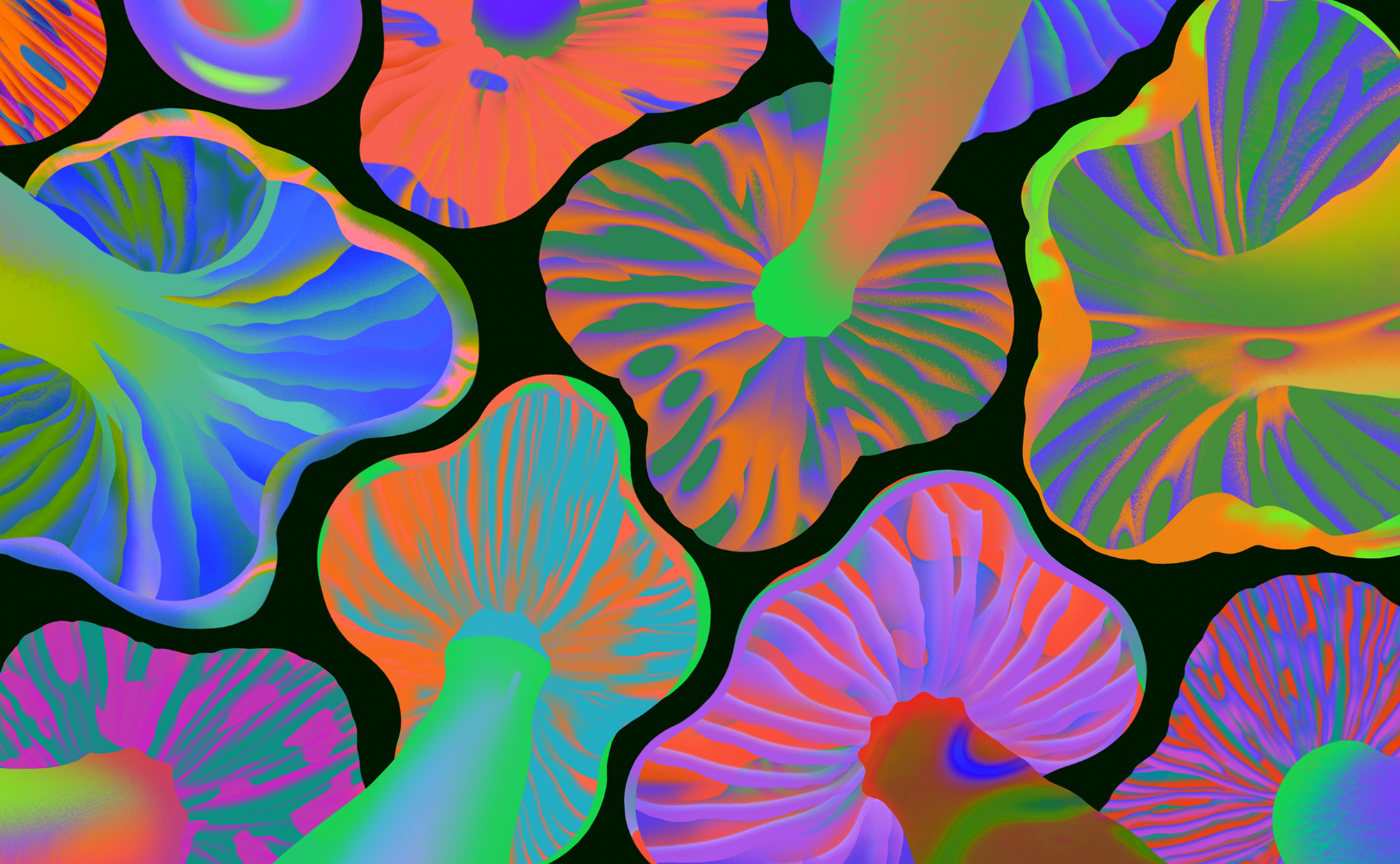
GOOGLE DESIGN LAB
ILLUSTRATION
Towards Resilient Systems
Designers and technologists look to the natural world to envision more resilient futures
This series of 6 illustrations examine the resiliency in our natural world, how we can learn and apply these models to build AI systems that can adapt, survive, and thrive regardless of changing environments.
This is one of the more challenging commissions to tackle, a lot of big and abstract ideas to convey. After rounds of sketches, at the end we realized by changing the perception of macro and micro points of view, seeing through the eyes of the creatures living among the natural environment, we are able to contextualize and visualized the qualities at play .
︎
EMERGENT
Ant colonies are capable of intricate, collective decision-making during tasks such as foraging, moving home, or constructing a nest. In isolation, ants display short and erratic bouts of activity. Within the colony, however, a rhythm of activity is generated spontaneously. Operating through a few simple mechanics, colonies, flocks, and swarms are capable of complex decision-making through a collective intelligence that emerges from the combination of actors, behaviors, and sensing.
This type of emergent behavior is exemplified in DeepDream’s Artificial Neural Nets, which are capable of generating abstract, dream-like images based on classifications of existing images.


DISTRIBUTED
In contrast to mammals with centralized nervous systems, motor and sensory capabilities of cephalopods are distributed throughout their entire body. Of an octopus’s 500 million nerve cells, two-thirds are stored in their arms. This allows for greater efficiency and responsiveness, as well as the ability to continue operating when parts of the system are compromised.2
This architecture models that of federated learning, which enables devices to collaboratively learn while keeping all training data on device. Federated learning is an alternative approach to centralized machine learning, where data is stored and processed in the cloud.
DIVERSE
A biodiverse ecology, one with many different species, is more resilient to change and disturbance. Coral reefs, which occupy less than 1 percent of the ocean floor but support 25 percent of marine life, are believed by scientists to have the highest biodiversity of any ecosystem on the planet. Recent studies suggest their adaptive resilience to warming sea water temperatures is due to the diversity and interdependence of lifeforms that comprise it.3
This quality is fundamentally important for ethical development of AI, where incorporating a wide variety of approaches and perspectives, as well as ensuring diverse training data, is critical for ensuring fairness.

REGENERATIVE
In a forest canopy, gaps produced by natural disturbances, such as fire, liberate resources and provide colonization opportunities for species which otherwise would not be able to establish themselves. This pattern of new plant growth after a forest gap, called gap dynamics, increases species diversity and in turn leads to greater resiliency of the ecology.4
Recently, a team at Google and Tufts University published a Regenerative Neural Net, capable of regenerating destroyed or obstructed pixels, with potential applicability for art and photography realms.
ADAPTIVE
Stony corals have the ability to change sex from male to female and vice versa in response to energetic or environmental constraints. This reproductive plasticity increases their overall fitness and evolutionary success.5
Live Relay is an adaptive interface powered by AI that empowers more people to communicate. It transforms speech to text and text to speech so you can talk on the phone without needing to hear or speak.


